Imagine a restaurant where every morsel and package is reused, recycled, or composted—sounds like a daunting goal, doesn’t it? However, this is the holy grail of zero-waste food, a growing global movement.
Unfortunately, India, one of the leading contributors to global food waste, is yet to produce zero-waste restaurants. Food waste has serious consequences, including environmental destruction, biodiversity loss and pollution, and although India produces 68.8 million tonnes of waste every year, there is hope on the horizon.
Some Indian cooks are moving towards more sustainable culinary practices with the goal of zero waste. “Indian kitchens have historically been rooted in sustainability,” says Yutaka Saito, executive chef of Delhi’s Home, which is reducing carbon emissions by striving to craft climate-conscious menus.
Chef Anumitra Ghosh Dastidar cooking in her kitchen at Edible Archives in Goa. , Photo Credit: Special Arrangement
While achieving zero-waste cooking is a significant challenge, there are chefs across India who are forging ahead by successfully implementing sustainable practices in their establishments. Anumitra Ghosh Dastidar of Bengaluru’s Bento Bento and Yo Colombo! restaurant, but she is best known for her permanent restaurant Edible Archives in Goa. She explains how she works with locally sourced ingredients, saying, “By using alternatives to sushi rice, such as indigenous rice from India, we support local farmers and reduce our carbon footprint.” Are.”
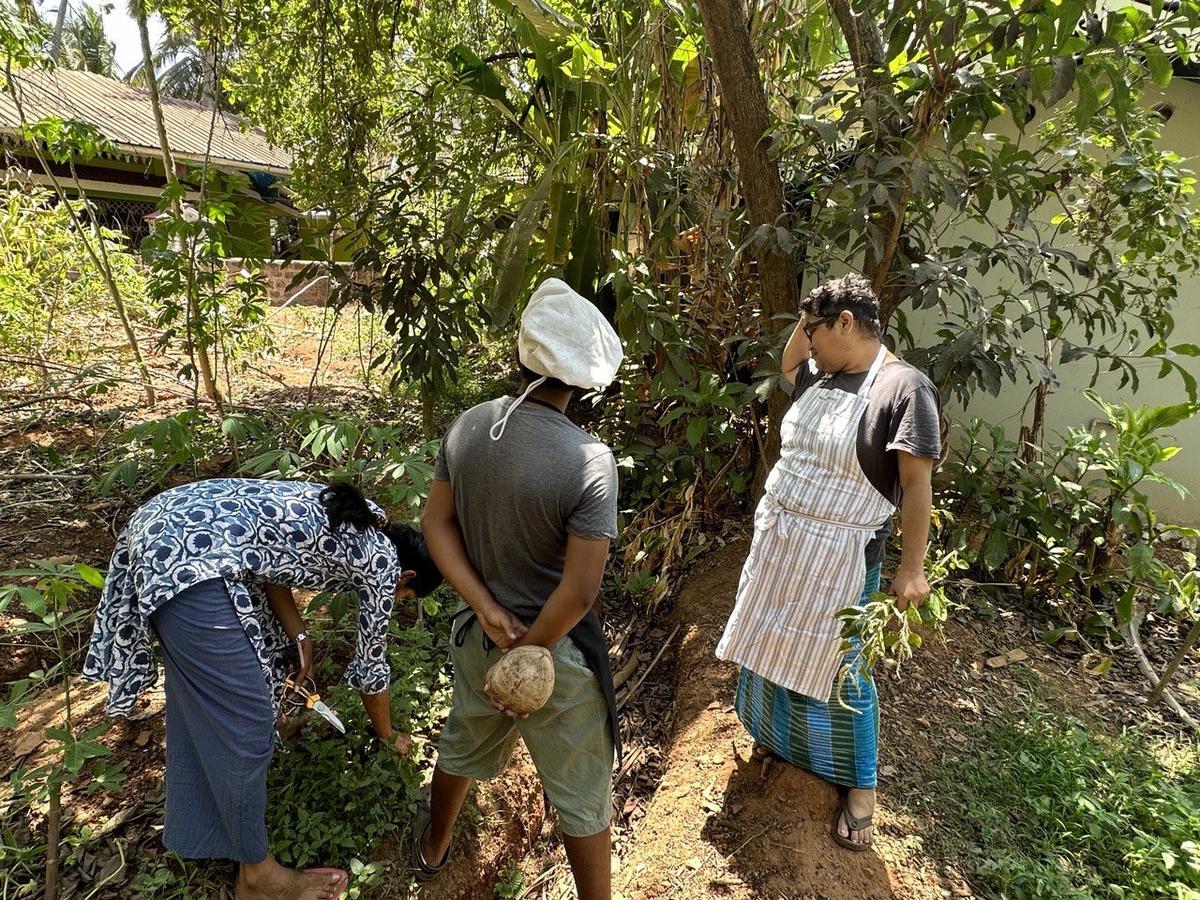
Chef Anumitra Ghosh Dastidar with her staff harvesting fresh produce in her vegetable garden at Edible Archives in Goa. , Photo Credit: Special Arrangement
However, Anumithra faces significant challenges in reducing waste efficiently in Bengaluru, where she has limited space. “It has to be factored into the design. In Goa, we have a small garden and a big compost pit. So, we compost all our wet waste there,” she says, then they use the compost for their vegetable garden. They also use vegetable peels to make fritters and give leftover bones to their dogs or stray cats.
While she has to rely on plastic or carton-packaged milk in bigger cities, which contributes to their dry waste piles, in Goa, she and her team ride a scooter to the local market for produce. Although their tie-up with local farms now provides them with vegetables directly from farmers in Bengaluru, the issue of wet waste remains. Another major concern is the lack of strict waste segregation by the municipal authorities in Bengaluru. They believe there needs to be dialogue between those who generate more waste, such as restaurants, and local authorities to encourage greater responsibility. “It is not only the laws that are responsible, but the citizens also need to be accountable. But I haven’t seen much conversation happening,” she says.
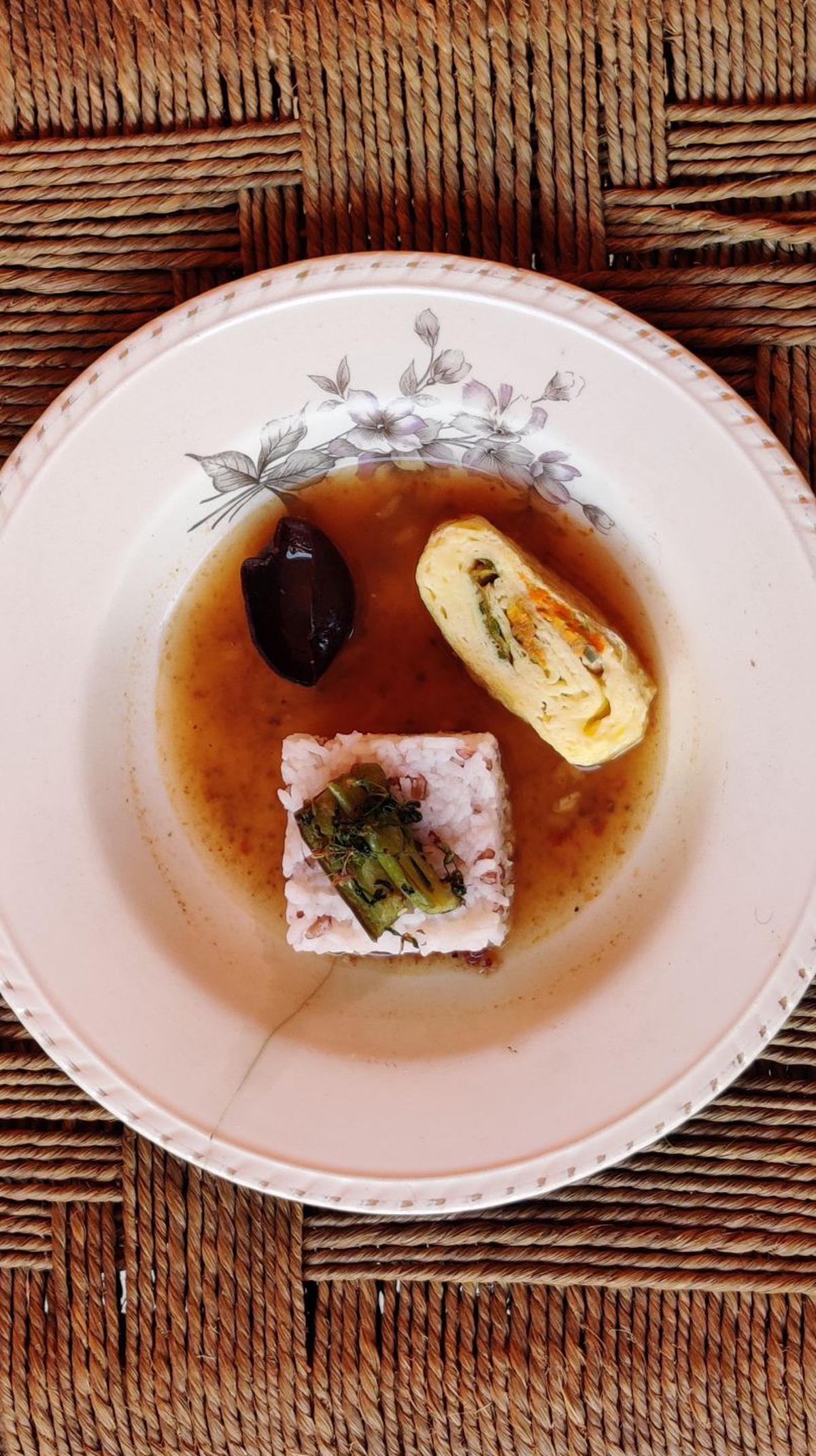
Pumpkin flower tamagoyaki in a clay bowl at Food Archives in Goa. Although male pumpkins flower profusely and do not produce fruit, they are an excellent source of nutrition that often rot on the plant because so few people make use of them. The dish is complemented with a bed of rice and topped with spinach roots and a broth made from vegetable rinds and fish bones.. | Photo Credit: Special Arrangement
Reducing food waste is important in restaurants, but Anumitra’s experience illustrates the need for customized solutions to address the challenges of different locations. “Waste is nothing more than a failure of imagination,” said chef Douglas McMaster of Silo, the world’s first zero-waste restaurant in London, in his TED talk.
One chef who has taken up the challenge is Rahul Sharma, executive chef of ARAKU Coffee, who believes that zero-waste cooking is not just about reducing waste, but also creating value from waste material. Is.
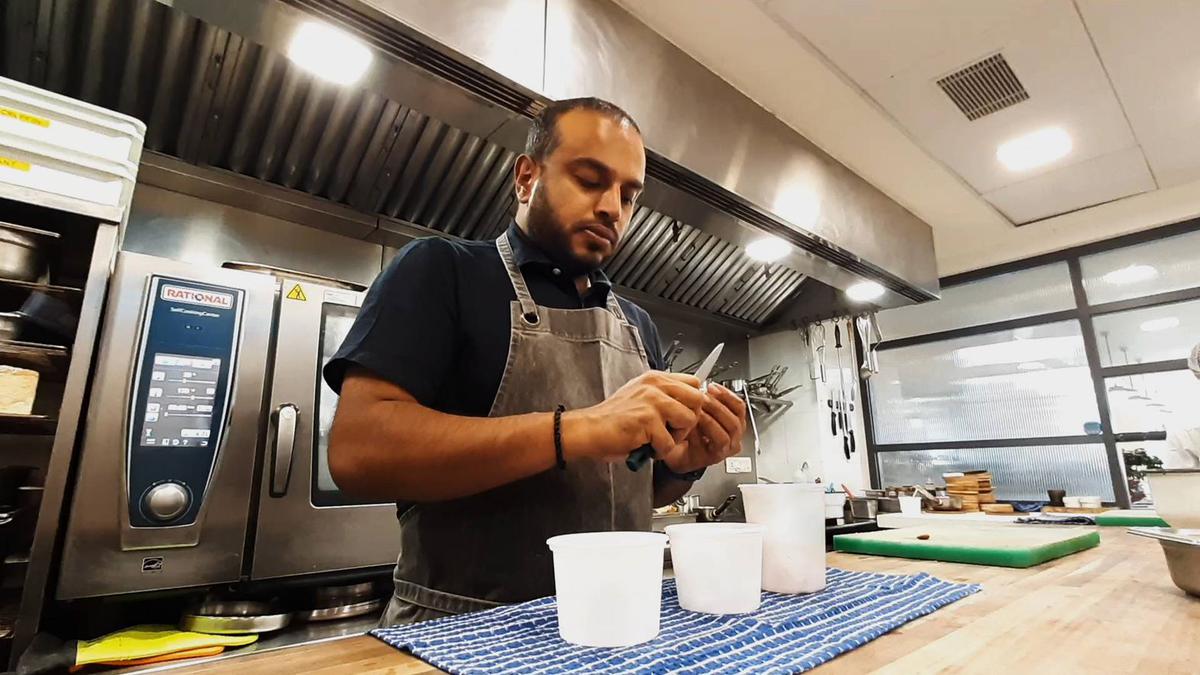
Rahul Sharma, Executive Chef, Araku Coffee. , Photo Credit: Ravichandran N
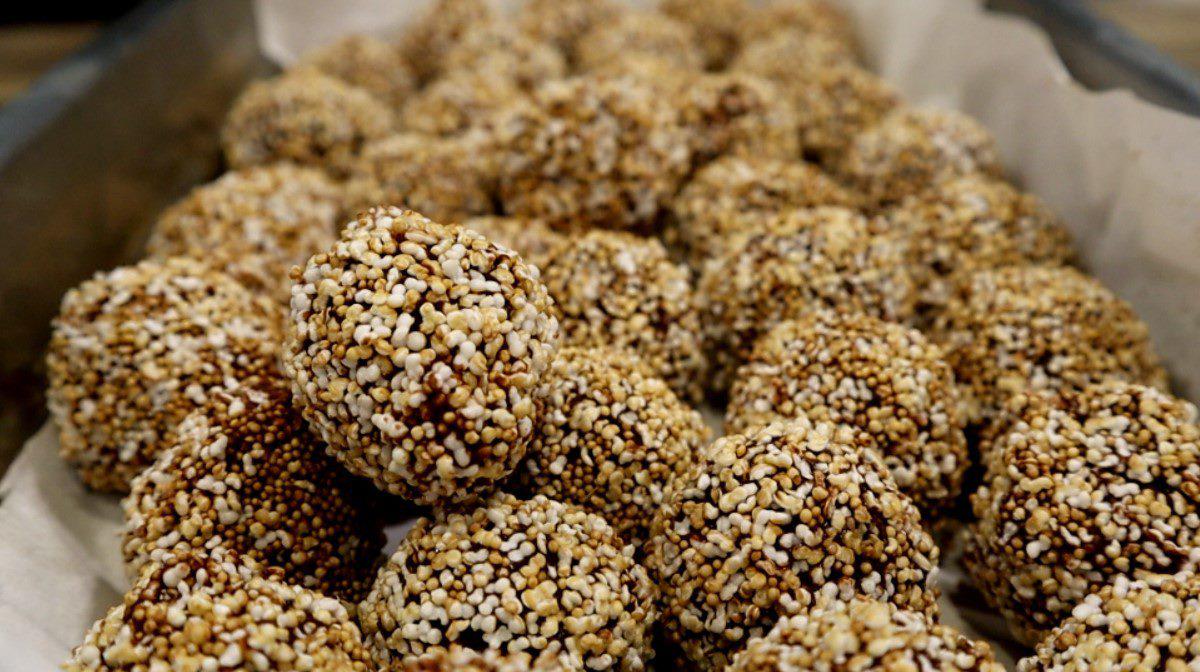
Cascara Bon Bones made with Coffee Cascara at ARAKU Coffee. , Photo Credit: Ravichandran N
To reduce food waste, the cafe uses every part of an ingredient, from potato and onion skins to almond skins, which are salted and dried for a delicious snack. Even the unsold pastry is re-used in the spice mix for the soup.
Rahul says that zero-waste cooking for restaurants does not come at a high cost. In fact, it helps reduce costs by allowing more use of products that would otherwise go to waste. “It’s a matter of using our imagination and creativity to solve problems and work towards a sustainable future,” he says.
To reduce single-use plastic waste, the cafe collaborates with farms and recycling facilities. They source their produce directly from farms, eliminate middlemen, and use recyclable baskets or paper bags to transport most items. Additionally, they opt for cling wraps made from starch instead of plastic.
However, like Anumitra, Rahul is yet to achieve the zero-waste restaurant status. “We stay away from single-use plastic as far as possible, although some things like chicken packaging cannot be avoided,” laments Rahul.
Anahita N Dhondi is a Delhi-based chef and author of the book Parsi Kitchen, A former partner at Soda Bottle Opener Wala and a proponent of zero-waste cooking, believes the primary hurdle is persuading customers to order and appreciate dishes that use non-traditional ingredients such as onion skin and leftovers. Used pulses. According to him, “Even though we prepare them, if customers don’t order them, they get wasted.”
To address this challenge, Anahita stresses the importance of conscientious labeling and educating consumers about the benefits of zero-waste cooking. “We need to change people’s attitudes toward these ingredients, to make them more receptive,” she notes. She stresses on the need for cooks to play a role in reducing food wastage. “If we want to include anything, we need to do it in a way that customers can read about it on the menu and be interested,” she explains.
Anahita is using her Instagram page with 166K followers to spread awareness about food wastage and how to reduce it. She gives tips on using the peels to make stock, leftover green onions, and preserving food to reduce spoilage. They aim to inspire customers to make more informed and eco-friendly decisions by creating awareness and promoting sustainable practices.
Arina Suchade, an independent chef and mixologist based in Mumbai, is also passionate about reducing food waste and embraces the challenge of changing the mindset of both consumers and business owners. She explains, “Some of the biggest barriers to introducing zero waste cooking in restaurants are changing the mindset that you are actually using waste in front of the consumer and not in front of the kitchen or business owner.”
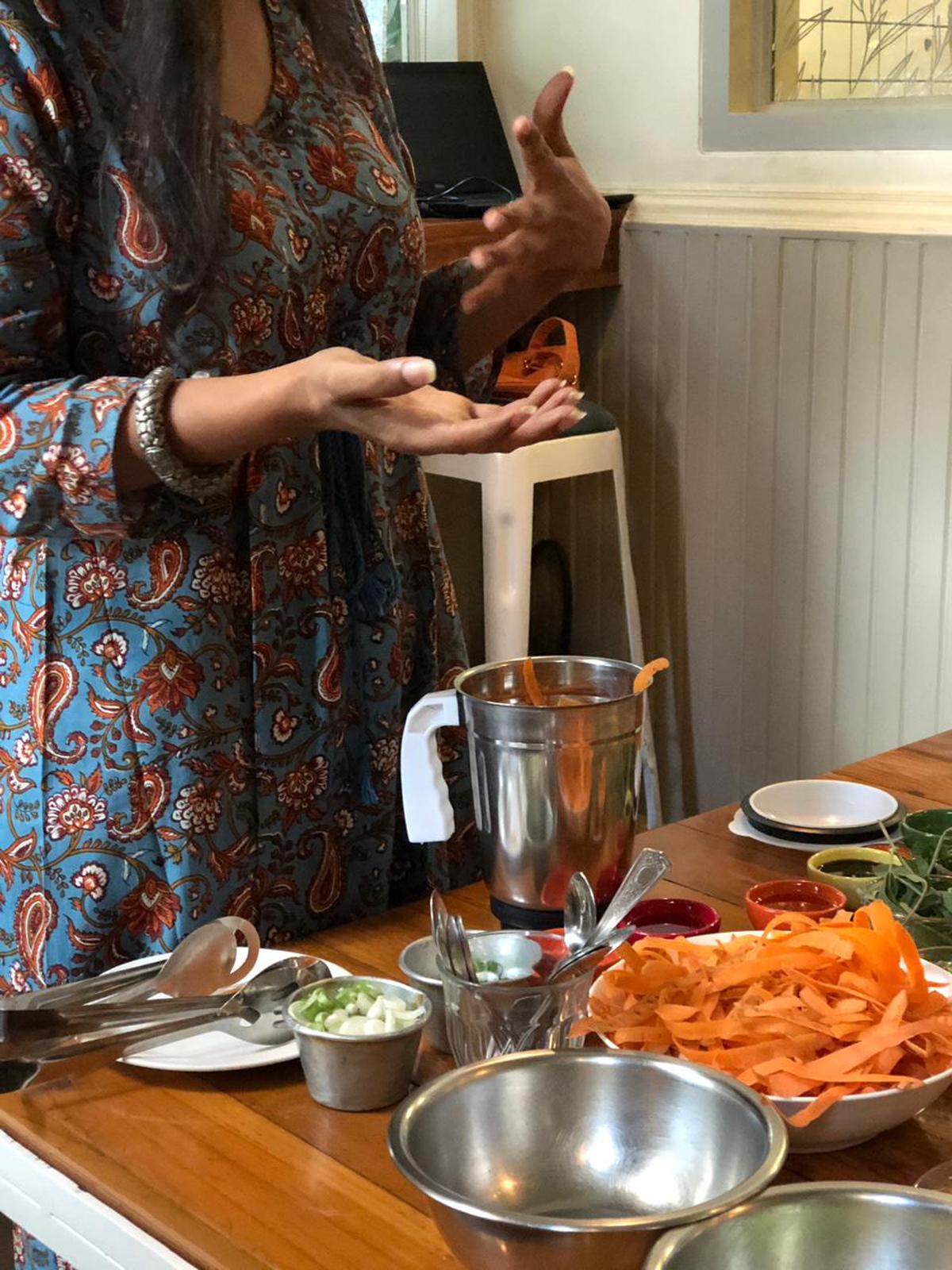
Arina Suchde is cooking food with leftover food. Photo Credit: Special Arrangement
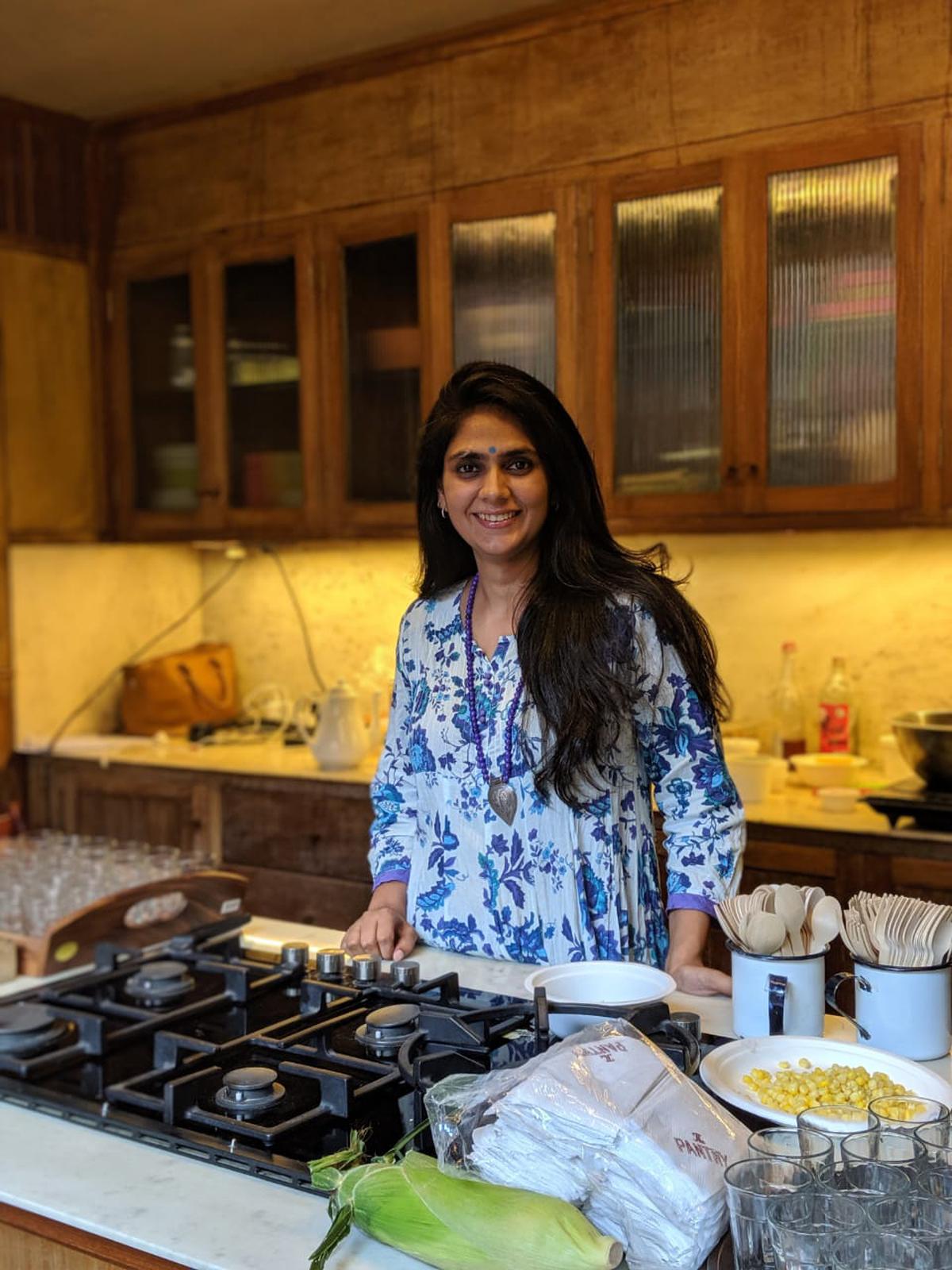
Arina Suchde | Photo Credit: Special Arrangement
To overcome these barriers, Arena educates employees and customers about the benefits of using all parts of an ingredient, citing the example of the edible and nutritious carrot skin and watermelon rind. “Using waste as an ingredient instead of surplus or excess scraps can lead to more creative and interesting menu offerings,” she says.
Apart from workshops, Arina has also developed sustainable dishes and products for The Pantry Mumbai at Kalaghoda and Woodside Inn Bar. She stresses the role of cooks, cooks and kitchen staff in reducing food waste, noting that many of them come from villages where resourcefulness is important.
“There are many country recipes that use parts of vegetables and fruits that would otherwise go to waste,” she says, giving examples of Dhantal (cauliflower stalk) Vegetablechutney made from gourd peels Parwal (ripe gourd), bitter gourd (bitter gourd) and orange peel or pumpkin kernels and Gujarati South Indian chutney bateka nu shaak (Potato vegetable) is made without peeling potatoes.
“I don’t see it as village or city cooking. It is just cooking habits that we should have picked up from previous generations,” she highlights the fact that zero-waste cooking is not a new concept for Indians, but a return to traditional practices that prioritize sustainability . “But the hesitation of kitchen staff is that they don’t think consumers want to pay for it because they believe consumers are used to a specific taste and quality.”
Despite these challenges, Arina remains committed to reducing food waste and eventually implementing zero-waste cooking methods in restaurants, homes, and corporations through her workshops. “Even business owners, when they see that it is helping and impacting the bottom line in the sense of reducing the cost of food waste and food loss, appreciate the importance of reducing waste. start to understand,” she said.
Zero waste cooking in restaurants is not just a noble idea, but a necessity. As we face the challenges of climate change and strive towards sustainability, it is heartening to see chefs in India preparing creative dishes, substituting foreign ingredients for indigenous products and reducing food wastage. leading in doing. However, the key to building the country’s first zero-waste restaurant may lie in looking inward – creating a sustainable ecology by sourcing locally, supporting neighborhood vendors and supporting our chefs in their noble work. Build the system Because ultimately, zero-waste cooking is about creating a better future for both our planet and our taste buds.